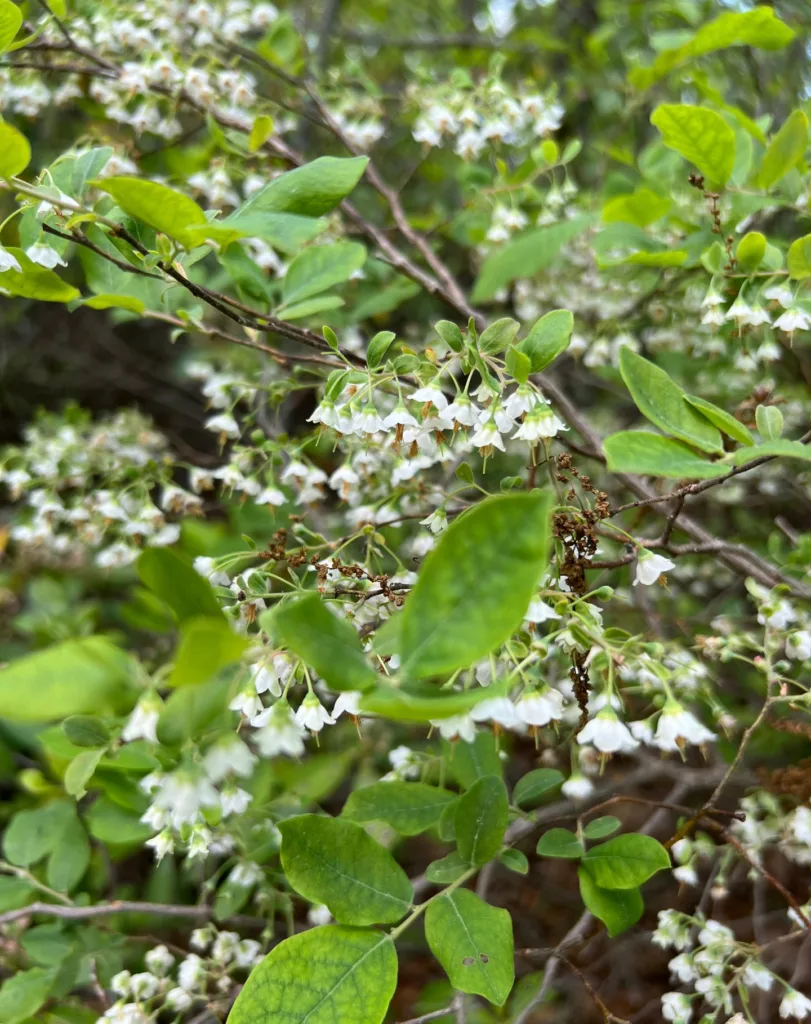
September 15 – Kalmia
"Kalmia, the mountain laurel, defines September 15."
Kalmia symbolizes ambition and perseverance. You reach for greatness with determination. Like its high-altitude blooms, you thrive in challenging conditions.
My Fascination with Kalmia
I’ve always been drawn to the subtle beauty of Kalmia, a genus of flowering shrubs in the Ericaceae family. These plants, with their delicate blossoms and evergreen foliage, possess a quiet elegance that captivates me. Native to North America and Cuba, they thrive in acidic soils, often found gracing woodland edges and mountain slopes. What truly fascinates me is the diversity within this genus, each species boasting unique characteristics that make it stand out.
A Diverse Genus: Exploring the Species
Kalmia encompasses a range of shrubs, from the low-growing Kalmia procumbens to the taller Kalmia latifolia:
- Kalmia angustifolia – Known as sheep laurel, this low-growing shrub is native to North America and thrives in acidic, boggy soils. Its glossy, evergreen leaves and striking magenta or pink flowers bloom in clusters, providing vibrant color in early summer. While visually appealing, Kalmia angustifolia is toxic to livestock, earning it the nickname “lamb-kill” or “sheep-poison.”
- Kalmia buxifolia – Commonly called sand-myrtle, this species is native to the Appalachian region, growing in sandy or rocky soils at high altitudes. It resembles boxwood with small, dense, evergreen leaves, and features white or pinkish blooms that appear in spring. This hardy plant is well-suited to harsh, windy conditions and adds a delicate charm to rocky outcrops.
- Kalmia cuneata – Known as whitewicky or narrow-leaved laurel, this rare species is endemic to the coastal plain of the southeastern United States. It has narrow, evergreen leaves and produces small clusters of white, tubular flowers with a hint of pink. Due to habitat loss, Kalmia cuneata is considered endangered, making conservation efforts crucial to its survival.
- Kalmia ericoides – Also known as the Caribbean heath or false heather, this small, shrubby plant is native to the Caribbean. It has needle-like leaves and blooms with small, white to pale pink flowers. Resembling true heathers (Erica species), Kalmia ericoides thrives in dry, rocky habitats and is a resilient choice for xeriscaping in warm climates.
- Kalmia hirsuta – Often referred to as hairy laurel, this species is a small, dense shrub found in the southeastern United States. The plant’s distinctive feature is its hairy leaves, which give it a textured appearance, and it blooms with delicate pink flowers in the spring. This species prefers sandy, acidic soils and grows well in pine forests and scrublands.
- Kalmia latifolia – Known as mountain laurel, this is one of the most popular Kalmia species due to its larger, showy clusters of pink, white, or red flowers that bloom in late spring to early summer. Native to eastern North America, Kalmia latifolia is admired for its broad, evergreen leaves and can grow as a shrub or small tree, making it a favorite in ornamental gardening. Plant FAQs: Mountain Laurel – Kalmia Latifolia
- Kalmia microphylla – Commonly called alpine laurel or bog laurel, this low-growing shrub is native to alpine and subalpine bogs across North America. It has small, narrow leaves and produces clusters of pink flowers. This hardy species is well-suited to cold, wet environments and adds a splash of color to high-altitude landscapes.
- Kalmia polifolia – Known as pale laurel or bog laurel, this species is found in wet, acidic soils across northern North America. It has pale pink to lavender flowers that bloom in spring, paired with narrow, glossy leaves. Kalmia polifolia is adapted to thrive in bogs and fens, providing a soft, ethereal beauty to these environments.
- Kalmia procumbens – Also called trailing laurel or alpine azalea, this ground-hugging shrub is native to arctic and alpine regions of North America and Eurasia. It has tiny, leathery leaves and delicate pink flowers that bloom close to the ground, forming a carpet-like mat. Its hardy, low-profile growth makes it ideal for alpine and rock gardens.
The Allure of Kalmia: More Than Just Looks
Beyond their aesthetic appeal, Kalmia species hold a special place in my heart for several reasons:
- Ecological Importance: Kalmia shrubs play a vital role in their ecosystems. They provide shelter and food for various wildlife, including bees, butterflies, and birds.
- Cultural Significance: Mountain laurel, in particular, holds cultural significance. It’s the state flower of both Connecticut and Pennsylvania, symbolizing perseverance and resilience.
- Horticultural Value: Many Kalmia species are popular in cultivation, adding beauty to gardens and landscapes. Their evergreen foliage provides year-round interest, while their spring blooms offer a burst of color.
However, it’s crucial to remember that Kalmia plants contain toxins that can be harmful to humans and animals if ingested. This is a reminder that while we appreciate their beauty, we must also respect their power and treat them with caution.
A Continuing Journey of Discovery
My exploration of the Kalmia genus is an ongoing journey. I’m continually learning about new species, their unique characteristics, and their roles in the environment. Whether I’m encountering them in their natural habitat or admiring them in a cultivated setting, Kalmia plants never cease to fascinate me. They serve as a reminder of the intricate beauty and diversity present in the natural world, a world I’m passionate about understanding and protecting.
If i die, water my plants!



